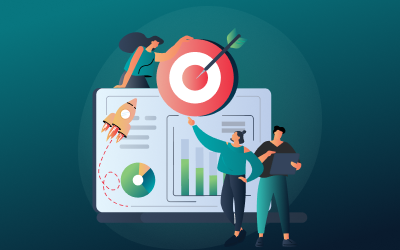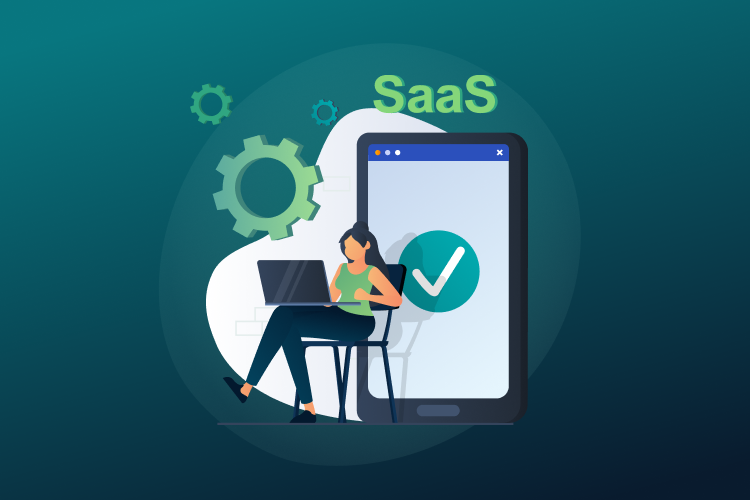
What makes great product management – great?
To be honest, a lot of things.
One of the main things is knowing what metrics you should track. Also, how to determine KPIs that will steer your product management efforts in the right way.
Isn’t KPI just a fancy saying for metrics?
Actually, no. Metrics and KPIs are not the same.
Metrics are the quantitative data which is used to measure user behaviour in your product. So, they are used to measure the performance of different parts of your product.
KPIs are determined by your targets and measure your performance. They tell you how good you are at achieving your targets.
In order to know what processes need to be fixed or improved, you need to know what to measure.
Why are product metrics and KPIs important for developing your SaaS?
SaaS environment is incredibly competitive. You already knew that.
Users are coming and going and everything is happening much faster. To provide the best customer experience, obtain new customers, and keep the existing ones – everything must be in line.
To achieve that, you need to keep track of several different metrics. There are three major categories:
- Business metrics (MRR, ARR, Profit Margin, Revenue Churn etc.)
- Product metrics (DAU, MAU)
- Customer metrics (CAC, ARPA, CRC, LTV)
In this article, we’ll focus on product metrics and KPIs. They will help you figure out what parts of your product need improvement.

Once users are in your product, your main aim is to keep them there and keep their experience great. Don’t do it — and you’ll lose them to your competitors.
When starting a new product, you’ll do things on a hunch, and that’s totally fine in the beginning. You can’t really know what your target audience needs. After acquiring a core user base, doing things based on your gut feeling won’t get you far.
What metrics and KPIs are important?
By tracking your metrics and user behavior in your product, you can make data-driven decisions about your next steps.
Here’s an example:
You’ve added a new feature to your app, but your users aren’t keen on using it. That means you should either amp up your product feature adoption efforts. Or you should pay more attention to what your users are really missing in your app.
Making data-driven decisions will save you both time and money. And doing that is now easier than ever. There are numerous analytics platforms that will help you track metrics.
The thing is, you have to know which metrics are actually useful for your business. And which ones should be connected to targets in order to measure your performance.
To avoid using vanity metrics, we listed the most important SaaS product metrics and KPI’s to track.
Before digging into the specific customer metrics, here’s what to pay attention to:
- Limit the number of metrics. If you are focused on product metrics don’t include business metrics such as: MRR, CAC, Profit Margin, ARPA, etc.
- Keep the metrics simple and understandable, do not overmeasure
- Prioritize metrics that have a direct product growth impact or makes “aha” moment. This will help you to improve the right segments of your SaaS product, develop features users actually need.
Key SaaS Product Management Metrics
- Daily active users and Monthly active users (DAU/MAU)
- Average Session Duration
- Session Duration / Cohort
- Customer Retention rate
- Users by team size
- Onboarding Engagement
- Feature Adoption
- Customer churn rate
- NPS (Net promoter score)
DAU & MAU
DAU (Daily active users) – number of active users per day.
MAU (Monthly active users) – number of active users per month.
These metrics show how many users are sticking to your product. If they use it actively, that means they see its value. Active users are the ones that log into their accounts and make significant actions in your product, indicating that they are using it actively.
Why it’s important:
This metric is important to analyze, predict, and grow user engagement.
Average session duration
Average session duration is a Google Analytics metric. It shows you the average amount of time your users spend in your app. It varies depending on the type of app, so it’s useful to know the general industry benchmarks. For example, if you have a food delivery app, a good average session duration for it should be short.
The user quickly found the food they wanted and it was delivered to him in a short amount of time. If you have, lets say, a podcast app, you’d like to keep your users engaged as long as possible, that means they like the content you provide. In the software industry you can nail down to the specific tool segments instead of the complete app or website.
Why it’s important:
It’s important to track this metric to know how much time your users are spending in the app on average. This can show you which parts of the app are more engaging and which are maybe unnecessary. Which means your users don’t see the value in it. You can do this by narrowing it down and checking how long are the sessions in different parts of the tool. It can be measured both in minutes and hours.
Session Duration / Cohort
Before tracking your session duration cohort you have to decide what your cohorts (aka customer segments) are. By comparing session duration between each cohorts you’ll get a clearer picture of how to tweak your product for each customer segment.
Customer Retention Rate (CRR)
Customer retention rate (CRR) is the percentage of active customers that stay customers over different periods of time. Users that are still using your product and impacting your MRR, are the ones that are retained (they haven’t churned).
CRR calculation: # of customers at the end of the calculated period – # of new customers / Customers at the start of the calculated period x 100
Users by team size
It’s important to find gems in your customer verticals. And gems are of course accounts with larger numbers of team members.
Why it’s important:
Larger accounts have more reasons to use your product. According to their behavior and needs, you can create an ideal buying persona. And steer your development efforts more towards their needs.
Onboarding Engagement
Onboarding shapes how your users will use your tool. It starts from the first time a user enters your app. There are a lot of touchpoints in user onboarding: product tours, in-app messages, onboarding emails, video explainers, etc. Tracking the metrics such as tour completions, email opens, and click-through rates, video time watched can give you great insight into what should be improved in your onboarding process.
Why it’s important: In order to see the true value of your product, you are the one that has to teach your users how to get the max out of it. If you do your onboarding properly, but still get high churn rates, then you’ll know you have to get a better insight into your customers’ needs.
Feature Adoption
In the SaaS market you have to keep up with your competition (or go ahead of them), so introducing new features in your product is a must. Every time you introduce a new feature it should be pointed out to your users in order for them to try it out.
Why it’s important: By measuring feature adoption you’ll know how many of your users are using it. This will help you determine how valuable is the new feature for them.
Customer Churn Rate
Customer Churn Rate is the percentage of customers lost during a given period of time. For SaaS this means customers who cancel their active subscription. Users canceling your subscriptions affects your MRR too, so you should also measure how much revenue you’re losing, which is called MRR churn.
MRR Churn calculation: lost MRR from downgrades + lost MRR from customer churn
Why it’s important: This metric will help you get a real insight into how valuable your product is for your users. The reasons why your users churn (cancel their subscriptions) can be numerous. It’s important to inspect which are the main reasons users churn, so you could react according to that.
NPS (Net Promoter Score)
This metric is useful for evaluating user satisfaction. Simply, this metric shows you the difference between loyal customers (promoters) and those who are not likely to recommend your product (detractors). In NPS surveys users rank your product from 0 to 10.
Detractors are users with ratings from 0 to 6 points, users with 7-8 points are neutrals, and those who gave it 9-10 are promoters.
Why it’s important: Getting genuine feedback about your product from your users and learning how it impacts their work, helps your product development efforts. Their feedback will help you learn what parts of the product should be in focus for improvement or expansion.
Formula
NPS = % of promoters – % of detractors
To sum up metrics and KPIs
SaaS market is an extremely fast and competitive environment. Developing your product by listening to your “gut feeling” or just your personal opinion won’t get you far. If anything being in the SaaS market will surely confront you with the fact that you’re really not always right.
A strategic, data-driven approach to your product will help you grow your user base faster simply by listening to their needs. Your product should be solving your users’ real problems, not problems you think they have.
That’s why tracking these SaaS metrics is so important – they give you insight into how well your product is solving your users’ problems and how valuable it is for them.
Keep in mind, even if your users’ behavior seems illogical to you – it doesn’t mean it’s illogical for them. You made your product to solve your users’ problems – now listen to how they respond to your solution.
If all of this seems a bit too much for you, tracking metrics is simple for us, so you can always contact us to do it for you.
Author
Jovan
Creating growth strategies for B2B SaaS products is one of my specialties. Over the last seven years, I've worked closely with a number of SaaS founders, VPs of marketing, and marketing managers to help them scale their businesses faster by applying growth marketing approaches. Goals. Grow and expand the agency to help even more B2B SaaS businesses.








